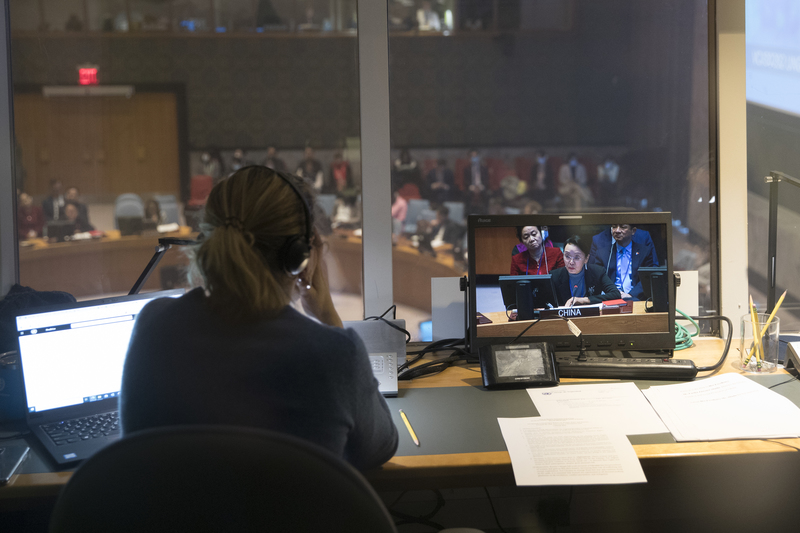In an increasingly interconnected world, where businesses span continents and deals hinge on split-second understandings, the role of an interpreter often gets reduced to that of a mechanical translator—someone who merely converts words from one language to another. But what if I told you that the best interpreters are far more than linguistic middlemen? They're strategic allies who can navigate cultural minefields, decode unspoken cues, and even turn potential breakdowns into breakthroughs. With global trade projected to reach $28 trillion by 2026 according to the World Trade Organization, the demand for skilled interpreters has never been higher. In fact, the U.S. Bureau of Labor Statistics reported over 81,400 interpreter and translator jobs in 2020 alone, with a median annual wage of $49,110, underscoring the profession's growing value in bridging divides. Let's explore how elevating interpreters to strategic partners can transform your cross-cultural endeavors.
Beyond Mere Words: Mastering the Unseen Layers of Communication
At its core, interpretation isn't just about swapping vocabulary—it's about conveying intent in a way that resonates across cultural boundaries. Top interpreters excel at handling the subtleties that words alone can't capture. Consider tone and body language: a firm handshake might signal confidence in the U.S., but in Japan, it could come across as overly aggressive if not tempered with a respectful bow. Interpreters attuned to these nuances act as cultural filters, ensuring that your message lands as intended.
Then there's the realm of cultural connotations. Idioms, historical allusions, and humor don't translate neatly. For instance, a casual reference to "hitting a home run" in a business pitch might confuse a non-American audience unfamiliar with baseball. Skilled interpreters reframe these elements—perhaps swapping it for a soccer metaphor in Europe or Latin America—to preserve the original spark without causing confusion. Research from the Journal of International Business Studies highlights how such adaptations can reduce miscommunication by up to 40% in multicultural teams, leading to smoother negotiations and stronger partnerships.
Communication styles add another layer. High-context cultures like those in China or the Arab world rely heavily on implicit signals and relationships, while low-context ones, such as in Germany or the U.S., prioritize directness. An interpreter who understands this can advise on pacing: slowing down to build rapport in one setting or cutting to the chase in another. By treating interpreters as insiders rather than outsiders, you gain a real-time consultant who helps you avoid faux pas and capitalize on opportunities that might otherwise slip away.
Real-World Lessons: When Interpretation Makes or Breaks the Deal
To see this in action, let's look at anonymized case studies drawn from international diplomacy and business—scenarios where interpretation either sealed success or sparked disaster. These examples, inspired by historical events, illustrate the high stakes involved.
In one high-profile diplomatic summit during the Cold War era, a leader's fiery speech included a phrase meant to convey economic superiority: something akin to "we'll outpace you." But the interpreter rendered it as a literal threat of destruction, escalating tensions and nearly derailing talks. The fallout? Months of strained relations and lost opportunities for collaboration. This wasn't just a word slip; it stemmed from ignoring cultural context, where bravado in one language sounds like aggression in another. Studies from the American Translators Association note that such errors contribute to 20-30% of failed international negotiations, often amplifying underlying distrust.
Contrast that with a successful turnaround in a multilateral peace conference post-World War II. Negotiators from diverse nations were deadlocked over treaty terms, with cultural misunderstandings fueling suspicions—one side saw concessions as weakness, the other as pragmatism. The lead interpreter, involved early in strategy sessions, spotted the rift and suggested reframing proposals to align with each party's values: emphasizing "mutual prosperity" for collectivist cultures and "individual gains" for others. The result? A breakthrough agreement that has endured for decades, credited in part to the interpreter's role as a cultural mediator. As detailed in accounts from the Geneva Conventions, this kind of proactive involvement helped forge consensus where direct talks had stalled.
In a business context, imagine a tech merger between a U.S. firm and a Japanese counterpart. Initial discussions hit a wall when American executives pushed for quick decisions, unaware that silence in Japanese culture often means thoughtful consideration, not rejection. A novice interpreter translated the quiet as disinterest, prompting the Americans to withdraw. But in a similar case with a seasoned interpreter acting as a partner, the professional paused the session, privately advising the team: "This isn't refusal—it's protocol. Give them space." The deal closed, yielding billions in synergies. These stories underscore a key truth: subpar interpretation can cost fortunes, while strategic partnership unlocks value.
Empowering Your Interpreter: Practical Steps to Build a Winning Alliance
So, how do you transform your interpreter from a passive tool into an active collaborator? It starts with mindset and moves to action. First, involve them early. Share briefing materials ahead of time—not just agendas, but cultural profiles of participants. This allows them to prepare for potential pitfalls, like region-specific taboos or jargon.
During sessions, create space for input. In breaks, ask open-ended questions: "What vibes are you picking up that I might be missing?" or "How is my tone coming across?" This taps into their observational edge, turning them into a second set of eyes and ears. A survey by the International Association of Conference Interpreters found that teams who solicited such feedback saw a 35% improvement in negotiation outcomes.
Post-event, debrief together. Discuss what worked and what didn't, refining strategies for future interactions. And invest in quality: opt for certified professionals with domain expertise, as their depth ensures accuracy beyond basics. By fostering this collaborative dynamic, you're not just hiring help—you're building a bridge that strengthens your global footprint.
Choosing Wisely: Your Interpreter as a True Ally in the Arena
In the end, selecting an interpreter is about more than filling a language gap; it's about enlisting a comrade who stands with you in the trenches of cross-cultural combat. They don't just translate—they anticipate, adapt, and advocate, turning potential clashes into connections. As businesses navigate a world where 75% of consumers prefer content in their native language (per Common Sense Advisory), ignoring this strategic dimension is a risk you can't afford. Partner with the right interpreter, and watch your international ventures not just survive, but thrive. After all, in the game of global success, the best players know when to lean on their team.











